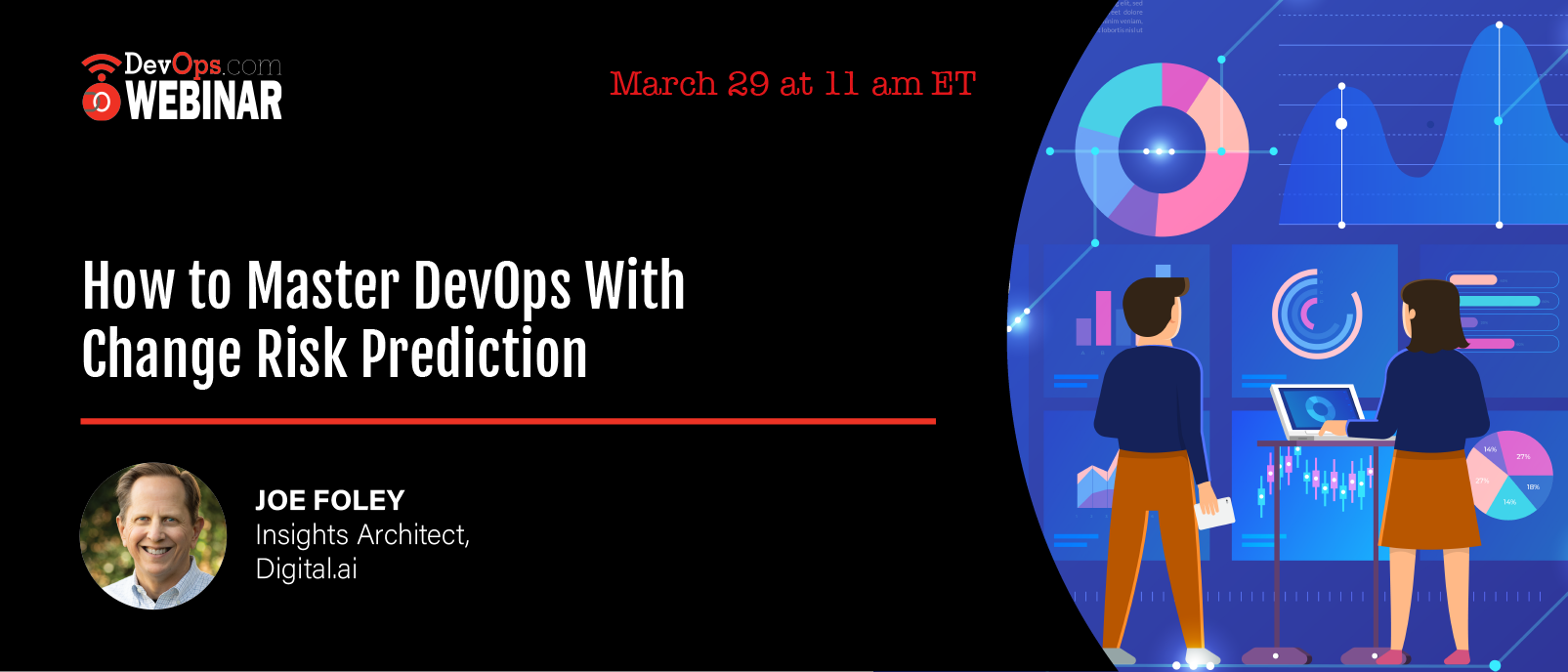Webinar
Think About Your Audience Before Choosing a Webinar Title

Sponsored by Digital.ai
What You’ll Learn in This Webinar
In the era of DevOps, IT leaders are under constant pressure to be more responsive to changing business needs. However, the cost of failed IT changes can be high.
While you may know that some deployed changes will fail, what you often don’t know is which ones — until it’s too late. In fact, a recent Gartner study estimates that 80% of major incidents are change-related. Finally, new approaches are breaking through, based on a rigorous application of Machine Learning (ML) and predictive analytics. How can you reduce change risk while retaining the agility of DevOps?
Learn how to apply AI / ML techniques to increase your systems’ stability while delivering the speed of innovation your customers expect. In this webinar, Joe Foley, Insights Architect at Digital.ai, will share how you can:
- Use Machine Learning to predict risky changes and facilitate root cause analysis both upstream and downstream of change
- Find and eliminate the systemic causes of change failure across people, process, and technology
- Continuously monitor existing risk factors and get early warning indicators for new risk factors
- Learn from case studies of organizations that have successfully implemented these techniques







